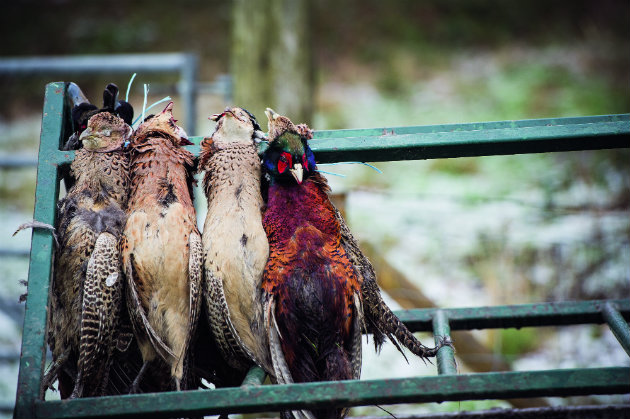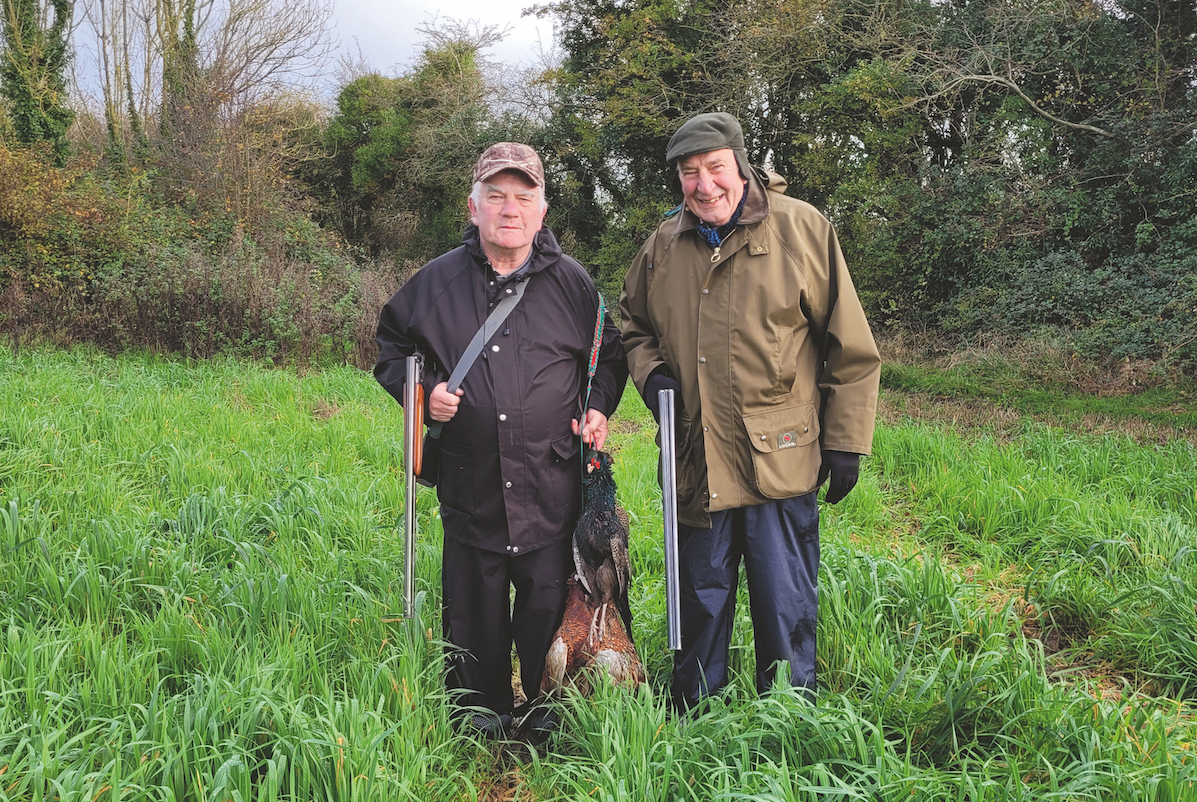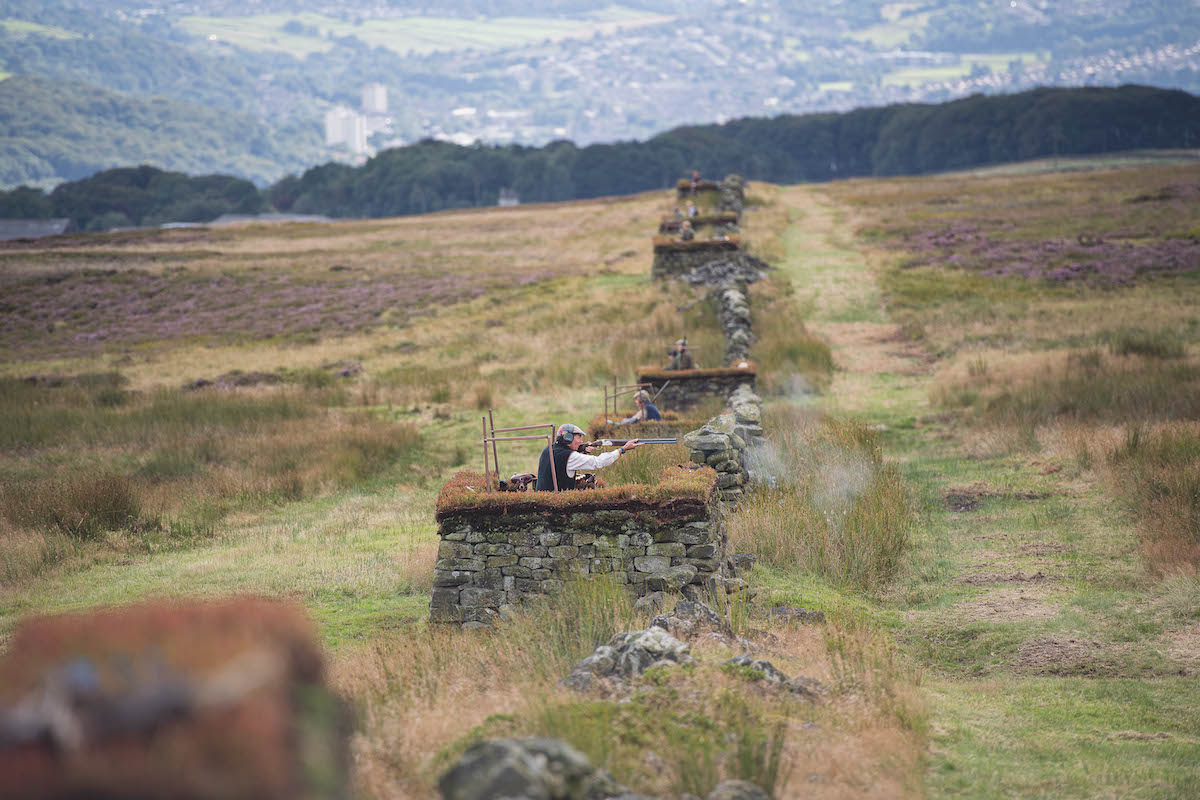Respect for quarry around the world: how hunting differs between countries
Respect for quarry manifests itself differently across the cultures, finds Graham Downing

Hanging shot birds on a gate or rail for collection is better than putting them in the back of a truck
I had noted a certain nervousness among the party of overseas Guns that I had invited to shoot for two driven days in Suffolk, but it was not until the morning of the second and final shoot that one of my Belgian friends approached me: “Will there be an opportunity to make a tableau so that we can take photographs?” he asked.
We were on a large estate where the normal procedure is for the gamecart to deliver birds straight to chill during the course of the shoot. I knew the keeper would not be best pleased if I asked him to unload the entire contents of the chiller at the end of the day purely for the benefit of the photographers, but surely there wouldn’t be any harm in asking him to pull the birds off the gamecart at the end of the second drive, so that they could be laid out and admired over drinks.
Respect for quarry
A flicker of a smile passed over the keeper’s face at my request, and I couldn’t help noticing the looks of amusement on the faces of the beaters as the gamecart driver started laying the birds out on the grass beside the guns’ trailer. “No, that’s the wrong way,” my concerned Belgian guest intervened as he hurriedly rearranged the game. “They’ve all got to be laid on their right wing, otherwise anyone looking at the pictures will think we have no respect for quarry we hunt.”
We’ve come a long way since the days when game would be heaped in the back of a truck at the end of the day for the dogs to jump around on, or left in a sweaty pile in the spare wheel on the bonnet of a Land Rover. The biggest changes occurred in 2006, after the introduction of the new food hygiene regulations which imposed legal obligations on all those producing and supplying wild game. (Read the bigger the shoot, the less the respect?)
Few would argue against improvements in game hygiene. It makes perfect sense to ensure that game is properly handled from the moment that it is shot so that it gets to the dealer in the best possible condition. (Read hanging woodpigeon – how to handle birds after you have shot them.)
Many Guns do not want to be bothered with eviscerating, plucking or skinning game, so it’s simpler to offer them a brace of pre-prepared pheasants or partridges, ready-wrapped in cling film and on polystyrene trays. But if we do not actually get the chance to admire and reflect upon the game that we have shot from the instant that it is carried off by the picker-up’s dog, is our sport diminished? Are shooters in danger of losing that vital emotional link which gives the hunter respect for quarry hunted? (Read how American hunters show respect for quarry hunted.)

Final bag of boar and deer. Game is displayed in the traditional style in Austria.
Continental Guns
On the Continent there is absolutely no chance of that happening. In fact, things are taken to the opposite extreme. Game, both large and small, is invariably arranged in a tableau to which traditional customs and procedures are attached. Often it is laid out to be admired on a bed of pine fronds or any other greenery that might come to hand. Some shoots in eastern Europe even go so far as to place birds on the ground in elaborate concentric patterns, while there is usually a moment at which the Guns are asked to pay their respects. It is not unusual for them to be invited to remove their hats in front of the tableau while the shoot captain recalls the events of the day.
Where large game is concerned, much more elaborate rituals are commonplace, perhaps involving flaming braziers and the blowing of hunting horns. I shall never forget the ceremony that occurred in the middle of a vast Polish forest where I had shot a large wild boar on a driven day. The shoot was drawn to a temporary halt while the Guns, beaters and the team of foresters gathered in a semicircle around the carcass of the slain beast. I was then invited by the head forester to kneel before the mighty boar, headgear removed, while I was ritually beaten across the back with a pine frond, a twig of which was then placed between the animal’s large, curling tusks. One of the foresters then blew the “death of the Keiler” on the hunting horn in what was almost a religious rite.
I spoke no Polish, and the head forester no English, so by way of two interpreters I asked him how many boar of that size he might expect to take in a season. The answer came back, from Polish to German and then from German to English: “A season? We might get one like that in five years of hunting.” The reason for the ceremony suddenly became clear.
In the past it was commonplace for even the largest and grandest of shoots to lay out shot game, row upon row, for the guns to inspect at the end of the day. At a time when estate owners vied with each other as to who could kill the largest head of game in a day’s shooting, this was perhaps not entirely surprising, but many, if not most, smaller DIY and farm shoots continue to lay out the bag for the guns and beaters to see.

Admiring game
More importantly, to my mind, the game can be admired. For let us not forget that ours is a hunting sport in which there must be a quarry. Without a quarry, shooters are merely marksmen, and that which they shoot at may as well be inanimate targets. The more challenging the quarry, the more satisfying is the successful taking of it, and the greater the respect that the bird or beast should command. The opportunity to reflect upon and honour the game we have shot reconnects us as hunters with the quarry we hunt and, perhaps, with the wild places from which it has come.
I feel that same reconnection with my quarry when I pluck and prepare what I have shot, checking out the condition of each bird, its age, its plumage and how it has been struck by the shot pattern. But then I was brought up a pot hunter under the strict instructions that it is the duty of the shooter to prepare the game he has shot and present it to the kitchen in an oven-ready state. (Read our guide to one-pot pheasant recipes.)
There is, of course, no point in suggesting that the clock be turned back. On the contrary, the game industry is to be commended in encouraging shoots to get their birds off the gamecart and into the chiller as soon as possible. And since public interest in eating game continues to increase, then somebody must be doing the right thing.
I hope that our smaller shoots continue to pay their respects at the end of a shoot day to the game they have shot, but where the large shoots are concerned, what about letting the guns have a look the other side of the gamelarder door if they would like to do so?
This article was originally published in 2014 and has been updated.








